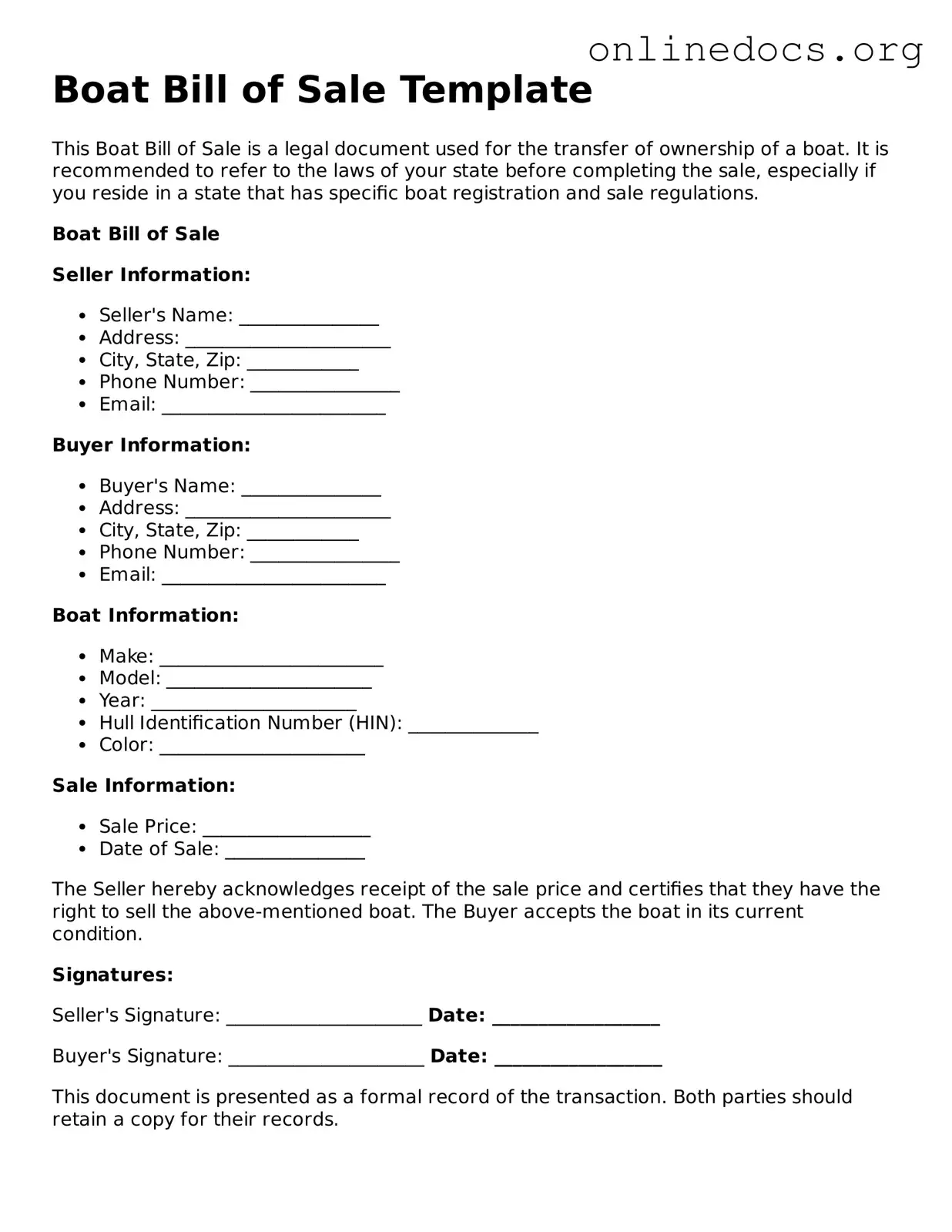Filling out a Boat Bill of Sale form can seem straightforward, but many make common mistakes that can lead to complications later on. One frequent error is failing to include all necessary details about the boat. This includes the make, model, year, and hull identification number (HIN). Omitting even one of these details can cause confusion and may complicate the registration process.
Another mistake is not accurately recording the sale price. The sale price must reflect the actual transaction amount. If you list a price that is significantly lower than what was paid, you might raise eyebrows during tax assessments. Always ensure that the price matches what was agreed upon by both parties.
People often overlook the importance of including the full names and addresses of both the buyer and seller. This information is crucial for legal purposes. If a dispute arises, having complete and accurate contact information can help resolve issues more efficiently.
Additionally, many forget to sign the document. Both the buyer and seller must sign the Boat Bill of Sale for it to be valid. Without signatures, the form is just a piece of paper. Make sure to check that all required signatures are present before finalizing the sale.
Not providing a date on the form is another common oversight. The date of the transaction is important for record-keeping and tax purposes. Without a date, it can be difficult to prove when the sale occurred.
Some individuals fail to include any warranties or disclaimers. If the boat is sold "as is," this should be clearly stated in the document. This protects the seller from future claims regarding the boat's condition.
Another mistake is neglecting to have witnesses or notarization, if required by state law. Some states require a witness or notarization to validate the sale. Check your local regulations to ensure compliance.
People sometimes forget to make copies of the completed form. After filling out the Boat Bill of Sale, both parties should keep a copy for their records. This is vital in case any issues arise after the sale.
Lastly, be cautious about using outdated forms. Laws and regulations can change, and using an old version of the form may lead to problems. Always obtain the most current version of the Boat Bill of Sale to ensure compliance with state requirements.
